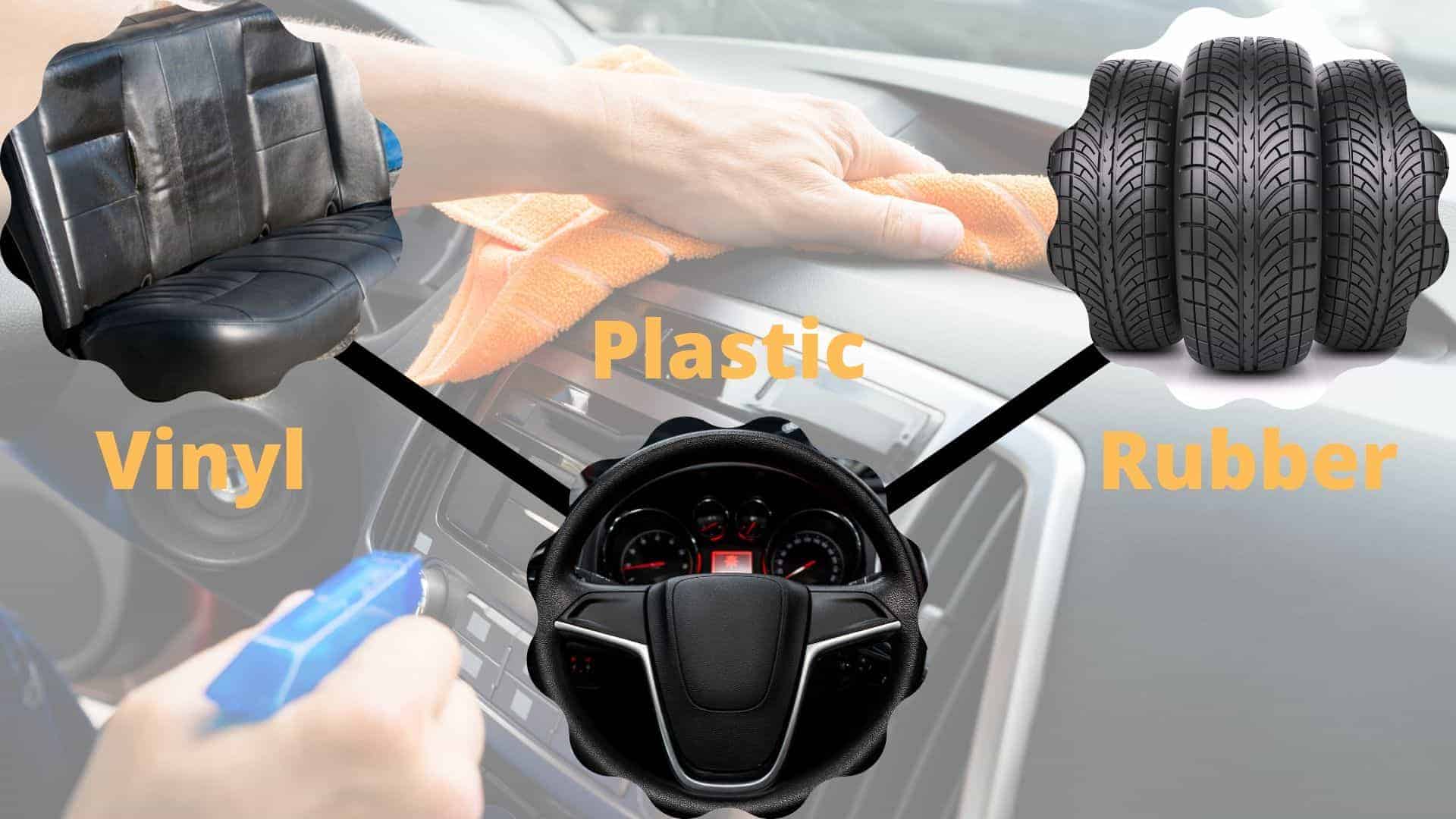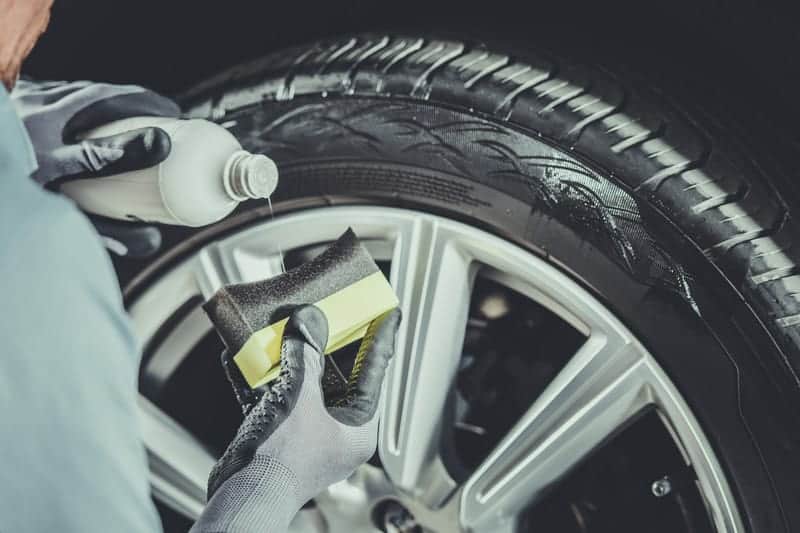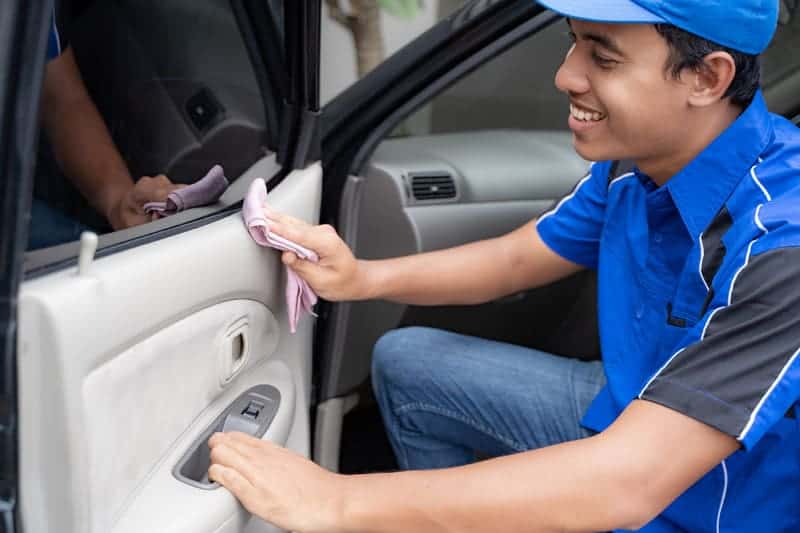Many of your car parts are made with vinyl, plastic, and rubber. I have seen the damage that can happen when cars are left sitting in the sun and rain for long periods. Everything eventually starts to weather, or in other words, your car surface gets damaged.
Vinyl, plastic, and rubber conditioners are used to protect your car’s interior and exterior parts from the damage that is caused by UV radiation and the weather. It helps your car look newer and provides a protective coat.
While conditioning my truck dashboard, I noticed that my conditioner worked well to clean and restore the color, so it didn’t look faded and made it look shiny.
The sun, rain, wind, and snow can take their toll on your car. Washing and waxing your car can provide some protection on the exterior, but what about the vinyl, plastic, and rubber surfaces?
The best way to look after those surfaces is to use a conditioner/restorer/protector that can provide UV protection and condition as well.
Protective products for vinyl, plastic, and rubber are called different names but should all do essentially the same thing. They provide UV protection and help provide a protective layer so they remain shielded and won’t crack.
If you get a product that only protects vinyl and rubber, you’ll need to buy another bottle for the plastic parts of your car. I prefer to use one that can cover all three surfaces to make it easier to use.
What’s the difference between Vinyl, Rubber, and Plastic?

Vinyl and plastic are both polymers. A polymer is “a large molecule, or macromolecule, composed of many repeated subunits” (Credit Wikipedia). These synthetic compounds are made into various car parts.
Vinyl is made of Polyvinyl chloride, also known as PVC. The hard type of PVC is used in piping, such as for watering the lawn. The soft type can be used in car interiors, such as for car seats.
Vinyl can be cleaned easily and needs to be conditioned every so often, so it remains soft and doesn’t get damaged by the sun.
Plastic, on the other hand, is made of a variety of combined parts to make different kinds of plastic. All of the hard parts on your car are likely made of plastic.
Plastic is also easy to clean, and although it may take longer to get damaged by the sun, it also needs to be conditioned and protected from the sun’s rays.
Rubber is a natural product that is derived from the rubber tree. This product can be used for many parts of the car, including the tires, weather stripping, and trim.
It can also get damaged over time by the sun and weather. Using a conditioner and protection will help it stay pliable, protected, and look nice.
How Can Protective Products Help?

When you apply a protective spray or cream to your car, you will help protect and clean the surface of the interior and exterior. Most cars have plenty of vinyl, plastic, and rubber parts, so starting off with just one section of your car can help.
Moisturize
Most protective products can moisturize your car’s vinyl, plastic, and rubber surfaces fairly well. The protective layer can help vinyl and rubber remain pliable and help prevent plastic from becoming brittle.
Beware of products that contain oils; these may dry up and degrade the plastic and rubber. Most popular protectants are safe, but each is comprised of a different formula. Checking the product’s specifications can help you make a good choice.
UV and Dirt Protection
After the surfaces have been moisturized, they are able to create a protective layer to help prevent UV damage. Once the product is dry to the touch, it should be able to prevent the accumulation of dust and grim for a while. In a month or two, it will need to be reapplied again to protect it effectively.
Restore
When car surfaces start to fade or get dry, applying a protective product can help the surface look new again. Dull black surfaces will start to look darker. Depending on the type of product you use, some will also create a shiny surface.
How do I Apply Vinyl, Plastic, and Rubber Protective Products?

It should be fairly easy to apply most products when protecting the interior and exterior of your car’s vinyl, plastic, and rubber. Although you want to avoid getting it on any other surface besides the ones it is intended for.
- First, make sure the surface is fairly clean. If it has too much stuck on the gunk, then use a clean rag and a spray bottle with soap and water to clean it off.
- Second, apply the conditioner/restorer/protector to the surface or clean the rag as described in the instructions for the product.
- Third, wait the time instructed before wiping off the excess product if instructed to do so. Check to see if there are any spots you missed. A second coat of the product can sometimes be applied but don’t overdo it.
- Forth, check back later. Make sure it has had time to soak in fully. Use a clean rag to check the surfaces again. Make sure they are not greasy. Greasy areas can wipe off on your clothes.
- Keep the rags and the product together for the next application. If you are serious about keeping your car looking nice, apply the product once a month.
Here’s an example of how you can apply products to protect your car’s interior and exterior.
CAUTIONS:
- If you do accidentally apply some conditioner/restorer/protector to a painted area, for example, just use a clean rag and a spray bottle with soap and water to clean it off.
- If you get some spray in your eyes, perhaps by rubbing your hand over your eye, then raise your eye thoroughly with water.
- Don’t apply the protector to your steering wheel if it has a slippery finish. Try applying it to a smooth plastic surface first and see how it feels after it is dry. If the surface is not slippery, then it may be fine for the steering wheel.
How Long Will It Last?
Most protectors don’t claim how long it will last, but there are a few that claim it will last many months or years. You can do some shopping around to find the one that is best for you.
Some of the factors you may want to consider are how long it will last, how easy it is to apply, and does it leave a greasy film after it dries.
Here are some products you may want to check out and see if they are the right ones for you.
Conclusion
When using a vinyl, plastic, and rubber protector, your car will benefit by looking new, getting clean, and being protected from the elements. Many new products do a great job helping your car look and function like new ones without causing a greasy finish.
If you want to use one of these products, it will be useful in providing a protective coat, so cleaning the next time will be much easier. Best wishes for your efforts in shielding your car from sun and weather and restoring its original beauty.






